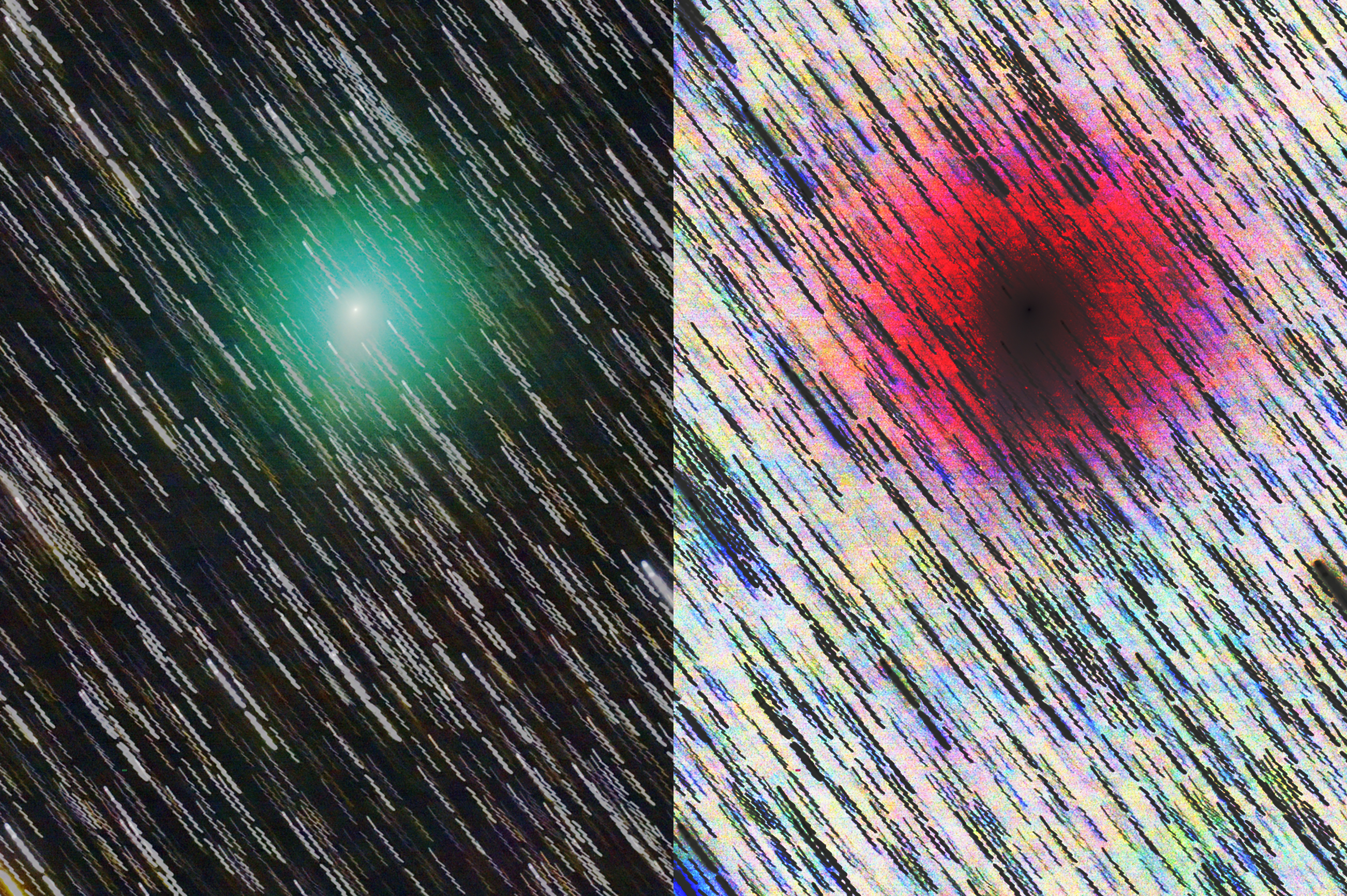The comet looked not so much different from three nights before, though exposure time was longer a bit. Whitish coma and dust tail got bigger a bit, but greenish coma or hydrogen envelop got smaller compared to that on March 16, 2017. Here is a frame of the comet taken on March 16, 2017. Telescope, camera, and scale are the same. www.flickr.com/photos/hiroc/33108025970 The center of the condensation of the coma was dark as a nearby star, GSC3449.921, mag. 13.13 at 10h47m45.7s +51d37'42.1" in Ursa Major on a 4-second exposure frame before modification. Earth distance: 0.155 AU Sun Distance: 1.096 AU The frame 1,302 x 1,732 pixels was cropped of the original 5,760 x 3,840 pixels, and it is comparable to a frame taken with a scope of the focal length 700mm. equipment: Takahashi FSQ-106ED, F3 Reducer 0.6x, and Canon EOS 5Dmk3-sp3, modified by Seo-san on Takahashi EM-200 Temma 2 Jr, autoguided at a star nearby with Takahashi FS-60C, StarlightXpress Lodester X2, and PHD Guiding 2 Comet tracking of PHD Guiding 2 helped tracking the comet. I am afraid if I have miscalculated drifting rate at the moment. Longitude 1" must be comparable to latitude 1 arcsecond in angle. exposure: 10 times x 15 minutes, 5 x 4 min, 5 x 1 minutes at ISO 1,600 and f/3.0 The first exposure started at 11.30:29 March 19, 2017UTC. site: 1,541m above sea level at lat. 35 48 52 North and long. 138 39 17 East in Yanagidaira Makioka ???? Ymanashi SQM-L reached 21.04 there. |

Page last updated: Fri 26 Sep 22:31:12 BST 2025